When are ceramics considered textile art? When they’ve been embroidered, naturally!
Caroline Harrius isn’t a textile artist. She’s a ceramicist. But, uniquely, she stitches into the vases, pots and ceramic household items that she builds and fires.
A lover of pottery from an early age, it was only when Caroline explored traditional ceramics as part of her Masters degree that she came to appreciate the breadth of this tradition and realised it could be contemporised by combining it with an alternative traditional craft – vintage household textiles.
As Caroline revisited her grandmother’s crocheted tablecloths, cushions and curtains, she copied the designs, drilled holes into her pottery and stitched these patterns into it.
With an interest in the heritage of these crafts and their association with women and domesticity, Caroline uses her art as a vehicle to highlight those household items that don’t often see the light of day but nevertheless contain a not-to-be-forgotten historical value.
As we follow Caroline’s foray into the world of ceramics, we discover why painting pink flowers once filled her with horror, how she reached her epiphany moment to merge two traditional crafts, and how the thousands of holes she drills into her vases become the perfect canvas for beautiful vintage stitch.
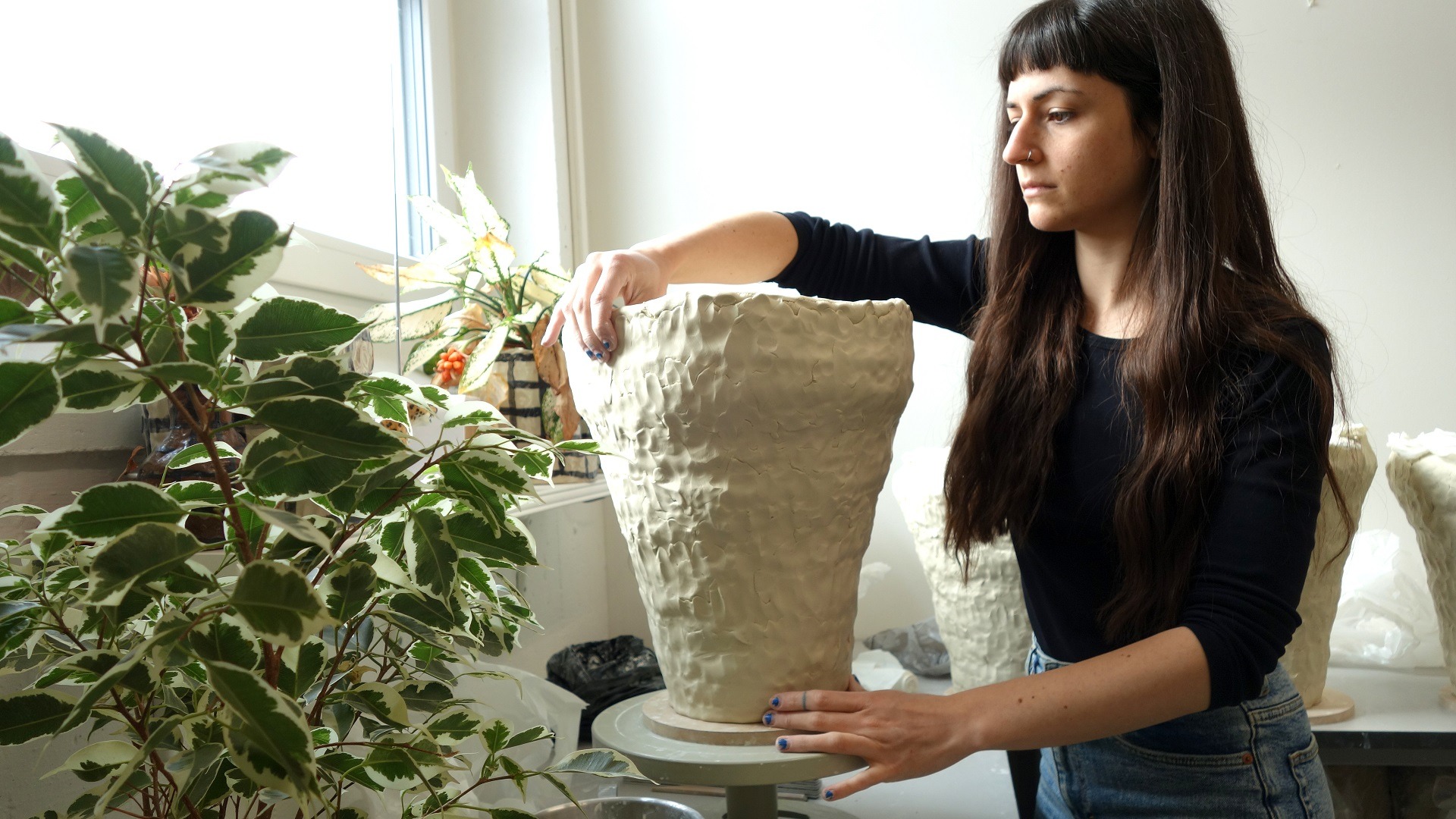
Combining clay and thread
Caroline Harrius: Textiles have never been my main material, although I’m sure I would have been a weaver if I’d been introduced to a loom before I discovered clay. Even though I don’t consider myself a textile artist in any way, I do value the craft highly and love to use it in my ceramic practice. What mainly attracts me is the historic heritage of the material, and how it’s associated with women.
I get most of my inspiration from textile objects I’ve found in the domestic space, the home. Over the past year, I’ve mostly worked from textile objects left behind by my grandmother. She had a huge amount of crocheted table cloths, the ones you usually see in flea markets for one euro. I’ve been surrounded by these my whole life but, until recently, never valued or even paid attention to them, which I find really sad since they’re filled with so much heritage and knowledge.
It was my Masters project, at the end of my MFA in ceramics in 2020, that led me to combine textiles with ceramics. When I started the project I knew that I wanted to discuss gender differences in ceramics history. Naively, I hadn’t realised that I was a part of the problem I wanted to discuss. I began by circling words that could be linked to femininity and women’s work within the late history of Western ceramics. It was while I was doing this that I came to the startling conclusion that I really didn’t value this genre of ceramics.
‘When I came to decorate my first painted ceramic – a botanical pattern on a vase – I was surprised to find that the pink flowers suddenly filled me with fear.’
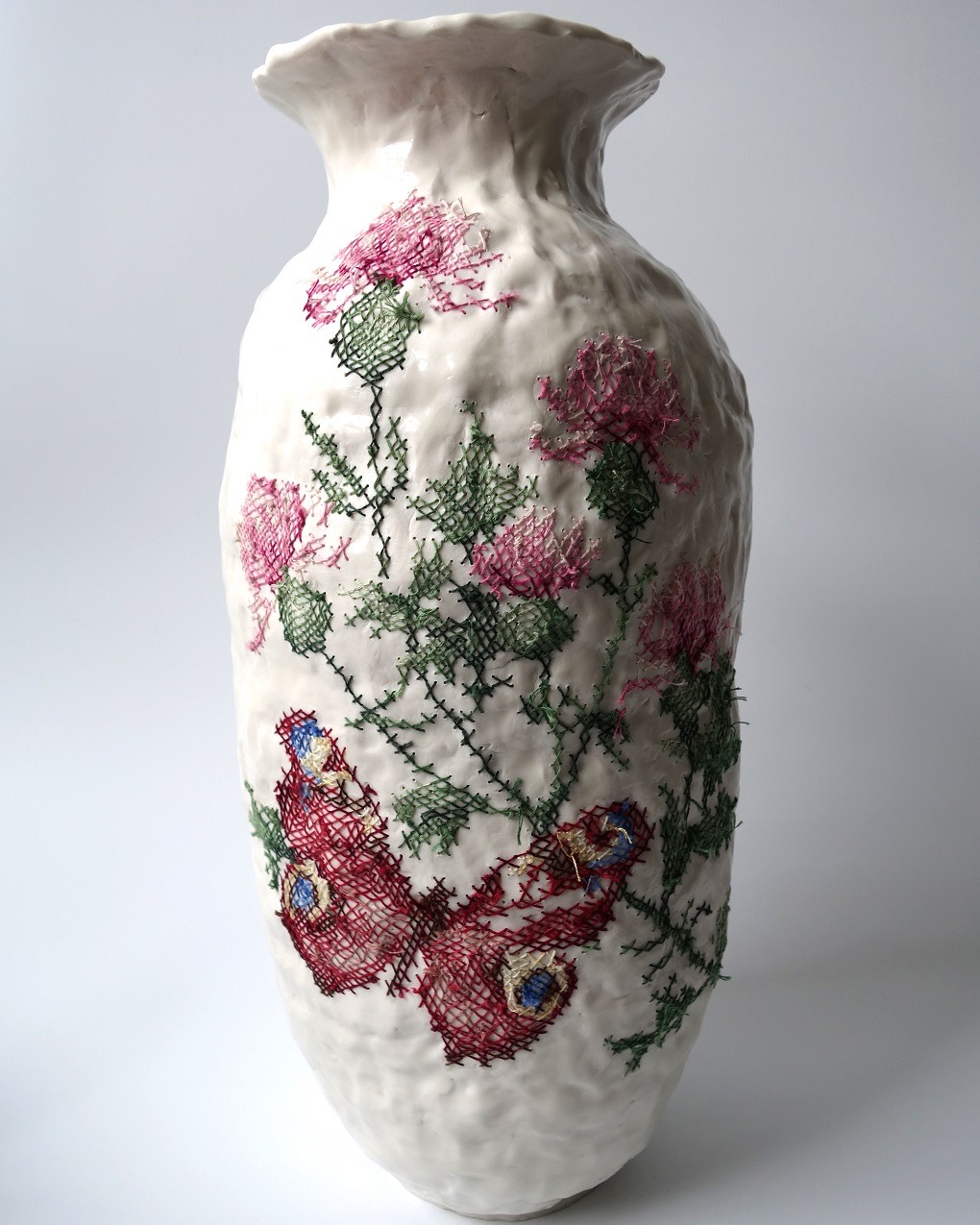
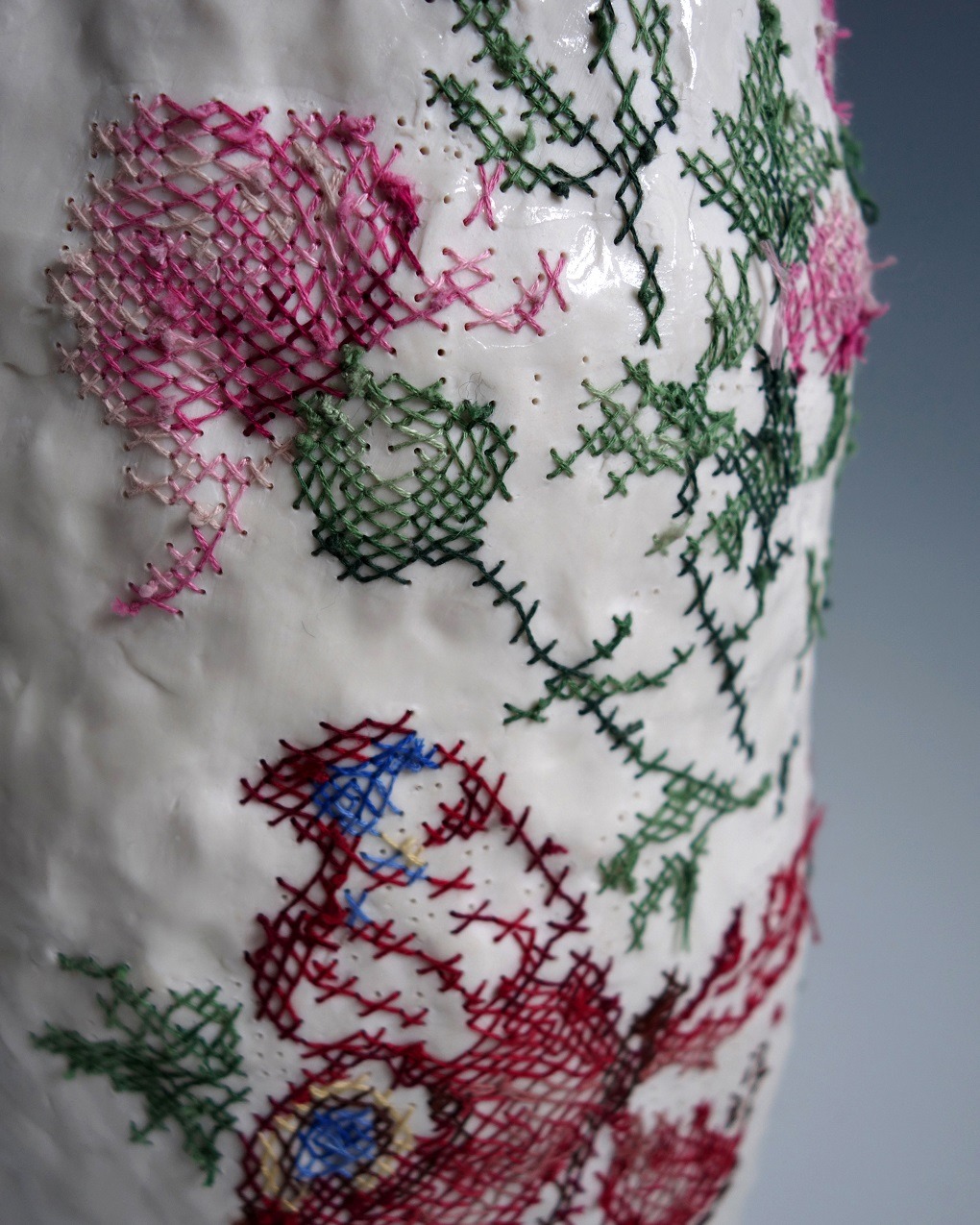
For the first time I started to feel ashamed of the things I was working on. I didn’t want anyone to see my sketches and try-outs without me being present. I wanted to explain there was actually an amazing concept behind it, and this wasn’t my true artistic style at all. After a great deal of resistance, I had to admit that, when I said I was interested in traditional porcelain, I had unconsciously neglected a huge part of the craft. I had chosen the few things that suited my tastes and omitted the rest, thereby unwittingly contributing to some traditions being celebrated while leaving others to be forgotten.
Since finishing the project, I’ve continued to explore the topic of ceramics while developing the whole concept by looking at other crafts that had a lower status in the art world. This led me to considering the domestic space and the homes of an older generation where I could discover decorative textiles. This was when I had the aha moment of combining these with my ceramics
‘I worked on the idea that, if you combine the two traditions, something novel and contemporary can be created. This attracts a new audience and launches a revival of the craft.’
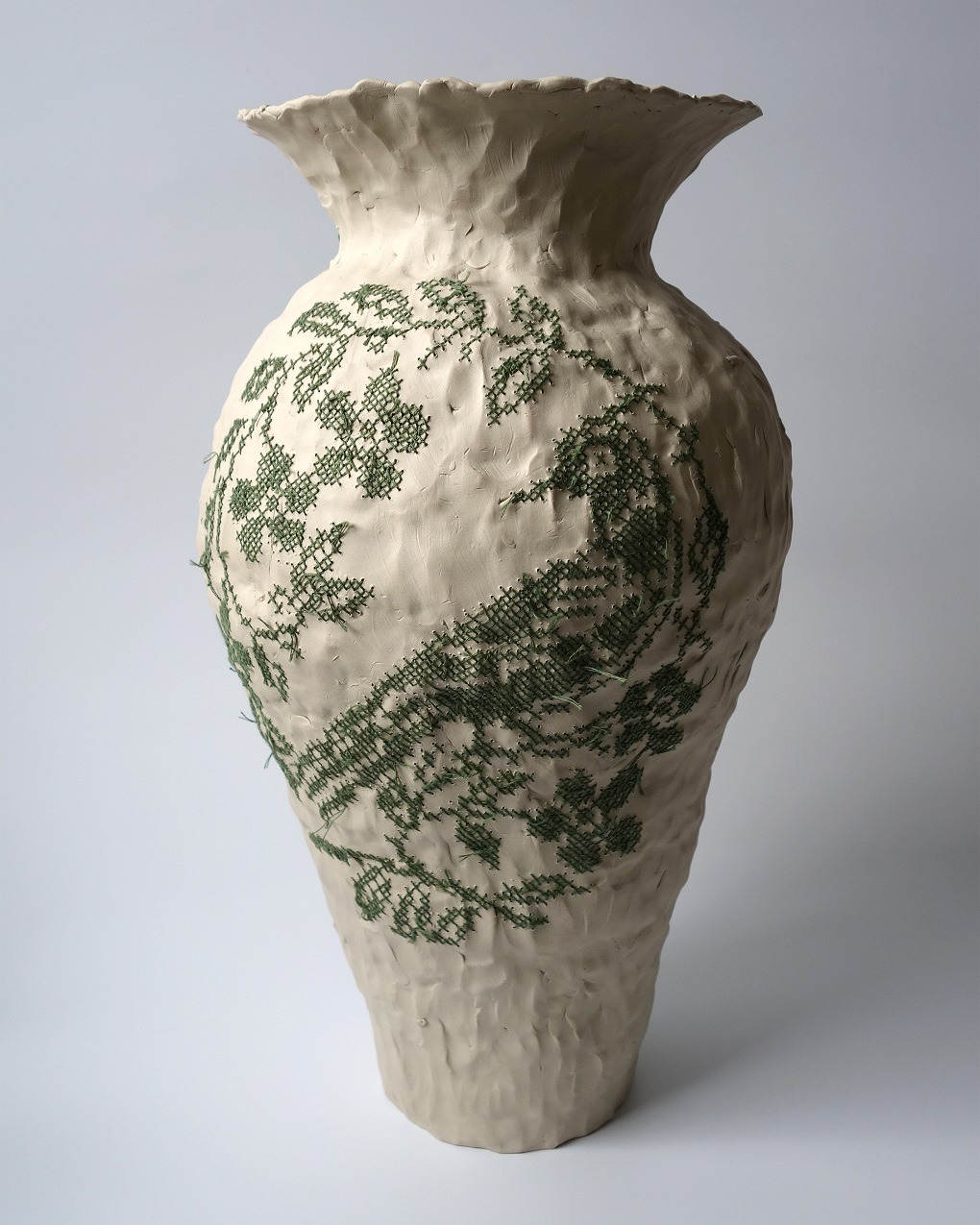
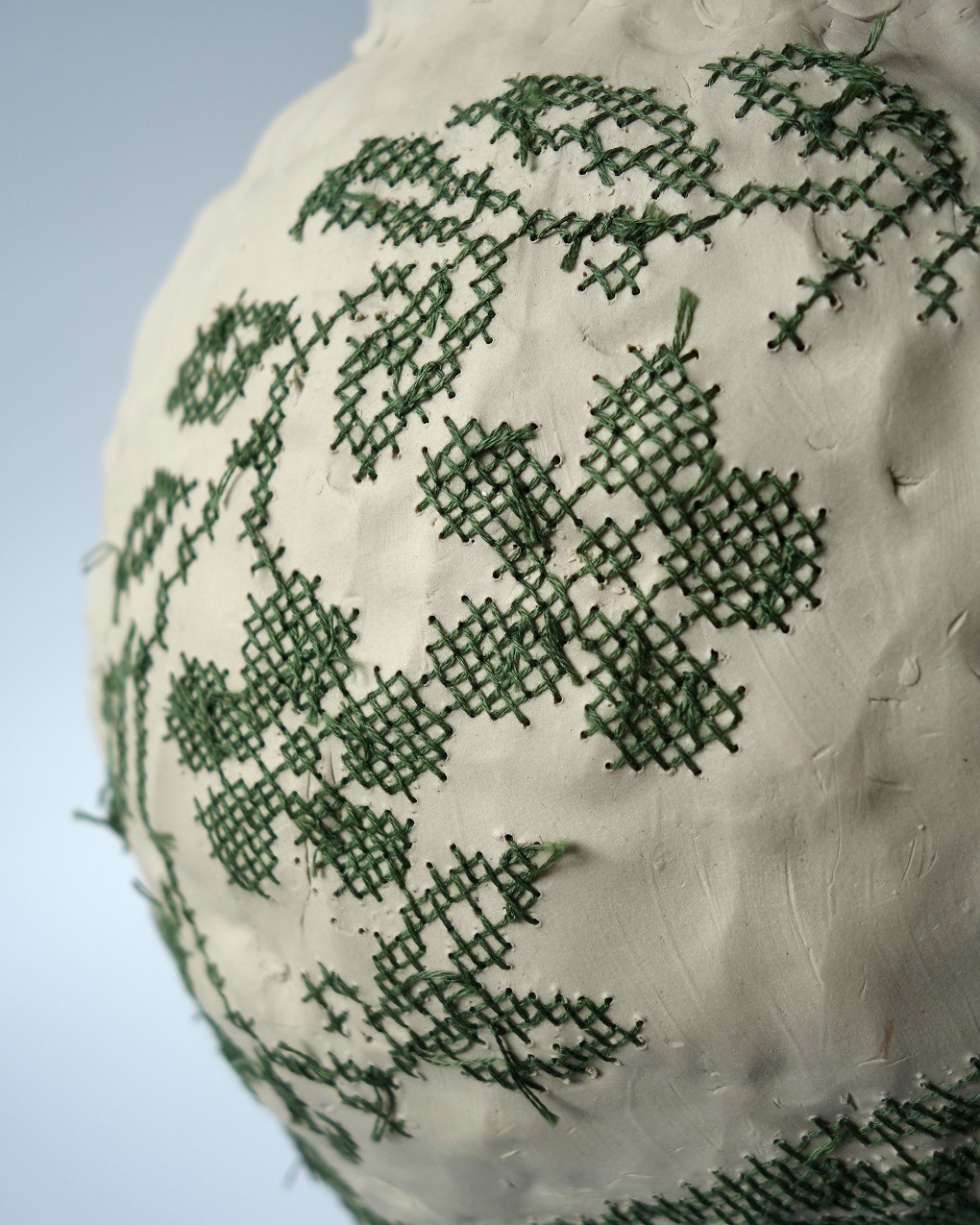
Gender hierarchies
In my practice as a ceramicist, I’m interested in crafts traditionally linked to female making, and how we value it in today’s high-tech society. I have examined my own prejudices and discovered that the more a tradition or method is linked to women’s history, home and decoration, the lower I’ve valued it.
My work is about highlighting crafts found in the domestic space, focusing on embroidery and decorative porcelain. I look at the objects that have rarely made it all the way to the high arts parlour, but that have remained within the domestic space. These are often small unpretentious objects in the home, filled with nostalgia and knowledge: crocheted curtains, embroidered cushions and botanical wallpaper.
‘To me, these traditional, homely items are precious and impressive craft objects, and with my works I attempt to make this important cultural heritage visible to a new audience.’
I combine different methods with my contemporary ceramics, creating new combinations between the crafts.
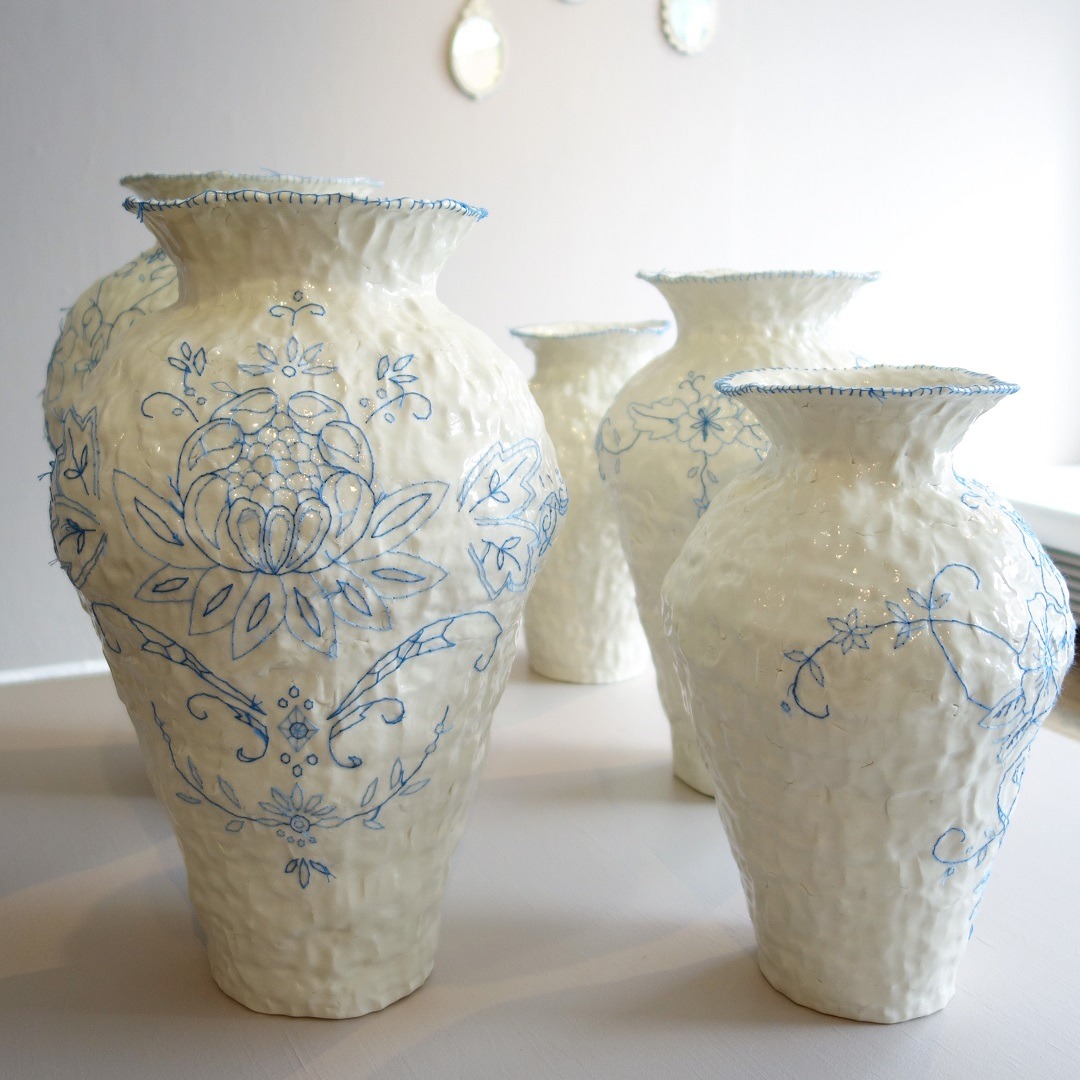
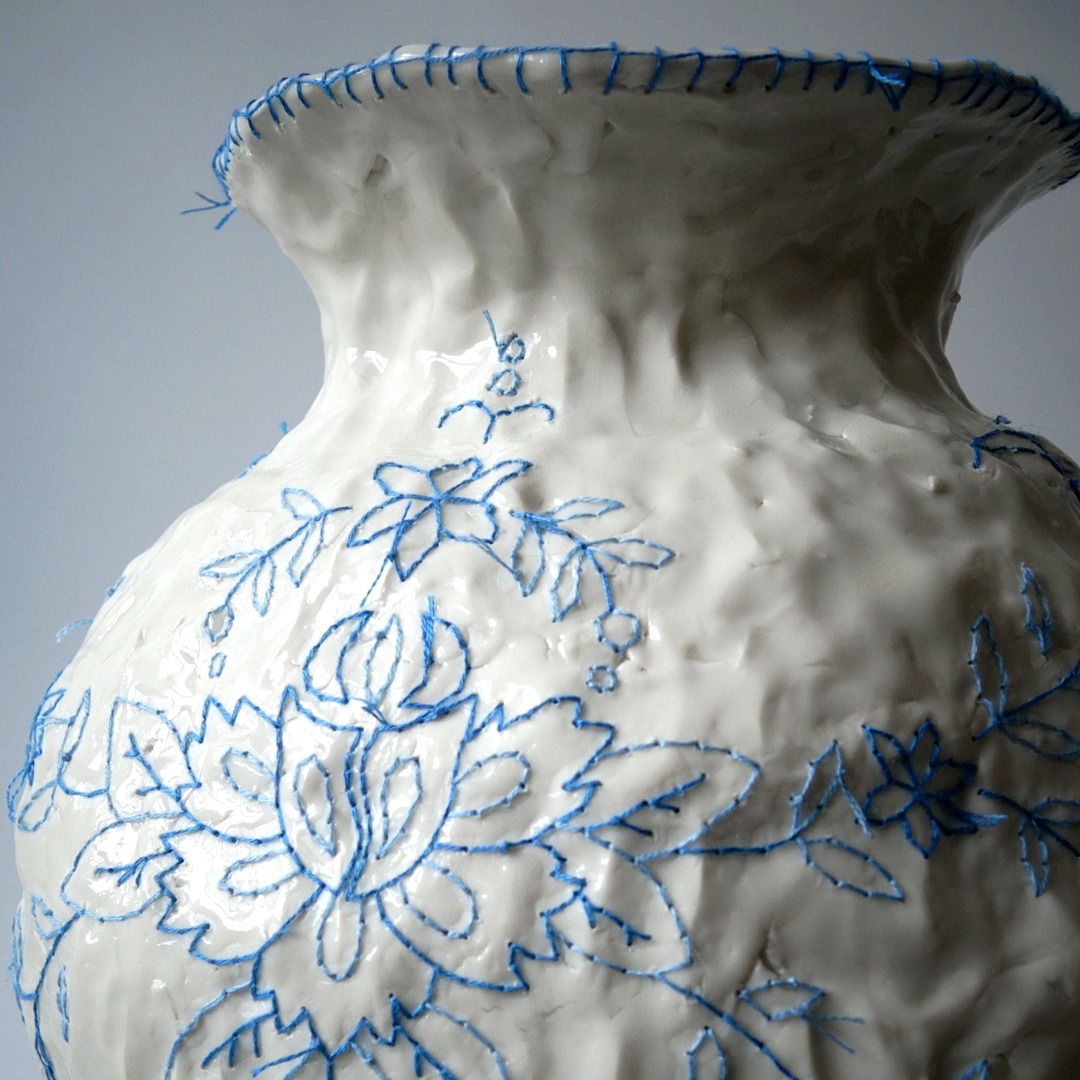
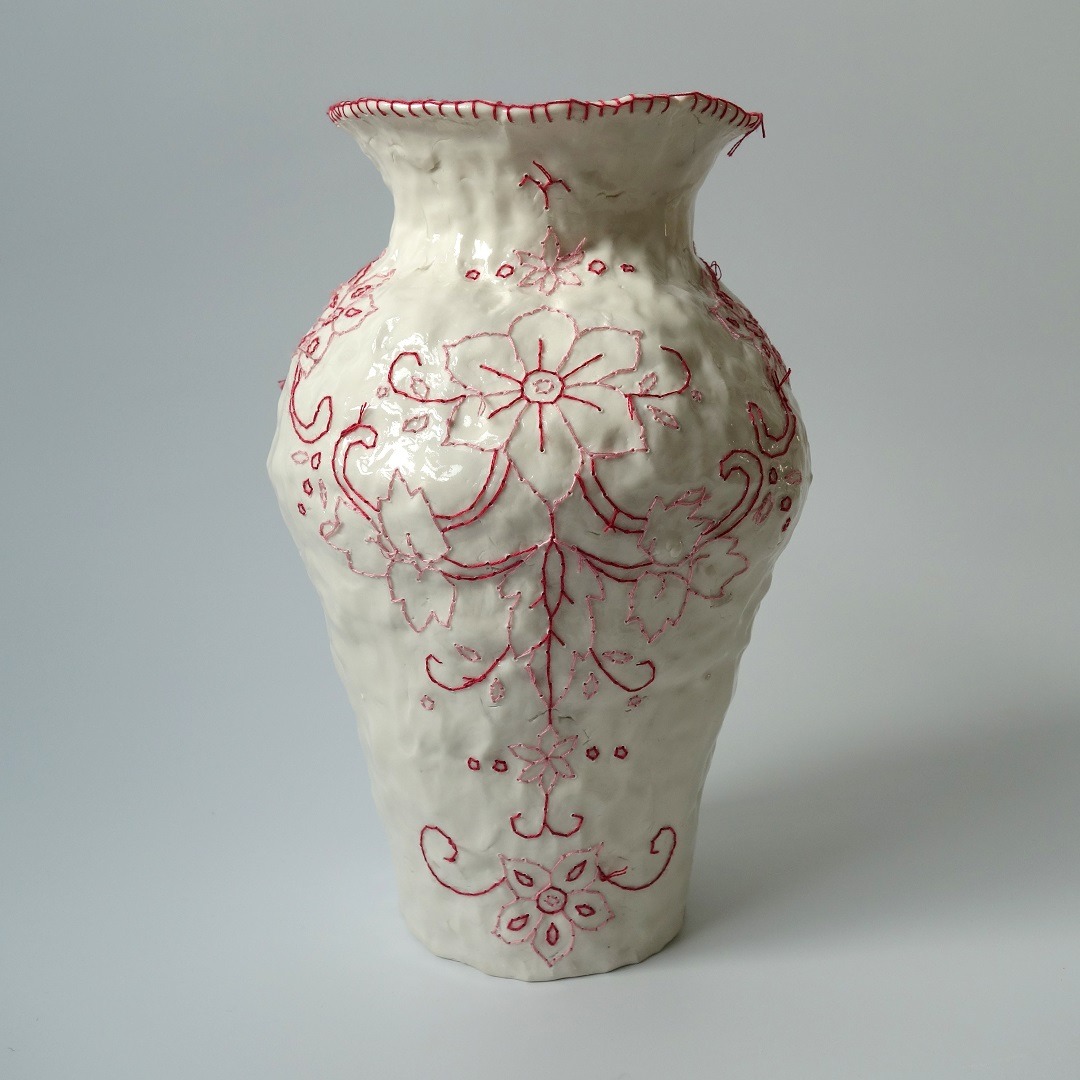
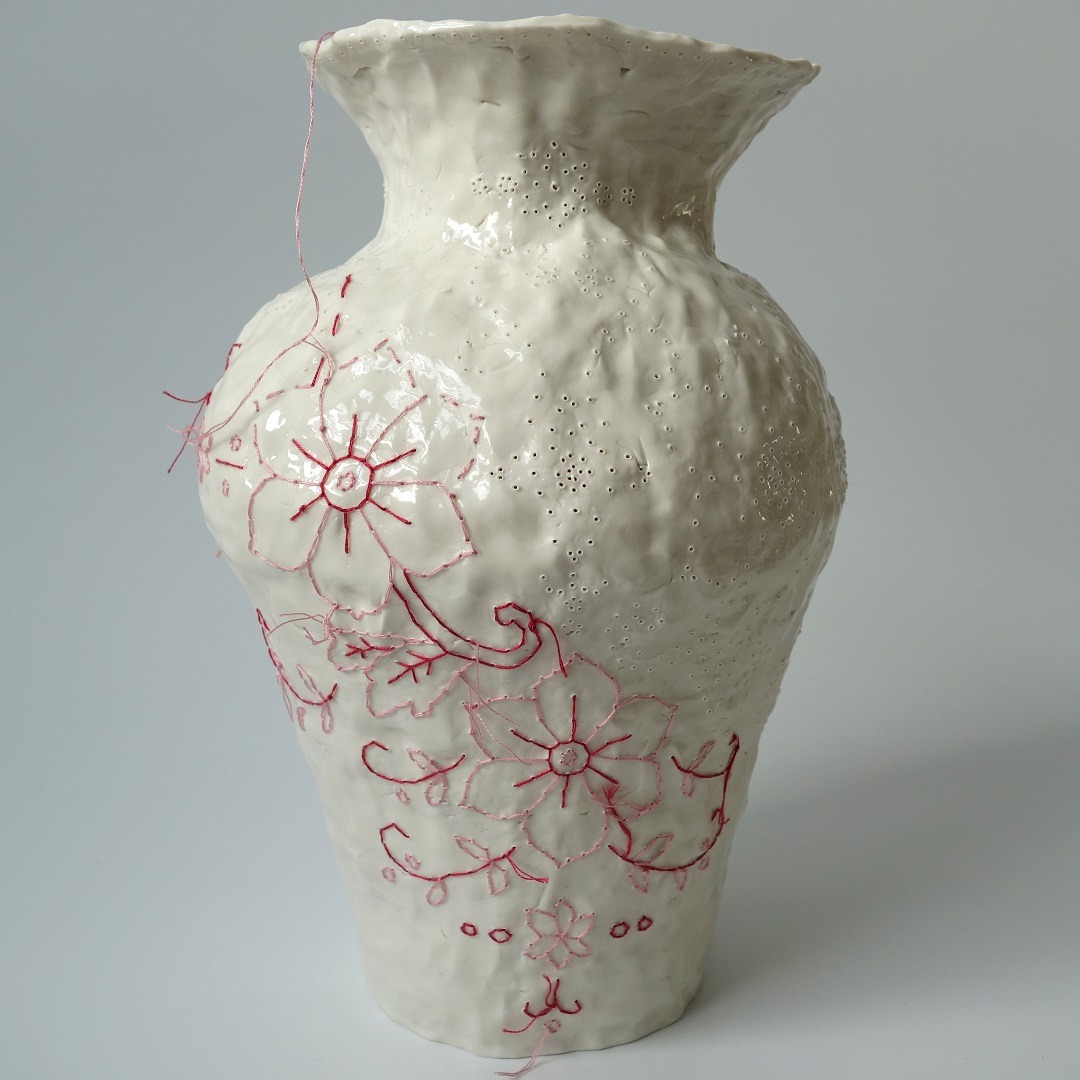
Ceramics obsession
I first started to study art in high school where I took painting as my main subject. I struggled with the feeling that I would never become as skilled as my friends, who I thought were great painters at the time, and I was sure that I would become an art teacher instead of an actual artist. After graduation, I decided to give myself another year of art and moved to a small community college in the middle of the forest. This is where I found ceramics and got completely obsessed. After this, I studied ceramics for several years, both at college and university.
I’ve worked a lot with the vase shape, and most of my objects are coiled in porcelain.
‘I’ve developed a special technique where I apply patterns found on textiles and embroider them onto the porcelain vase.’
The first thing I do is to paint the pattern onto the leather-hard greenware, and then I drill thousands of holes, following the lines I have painted. Afterwards, I fire the pot for a first time, and then I carefully glaze around all the holes before I place the vessel in the kiln for a second time. When the vase is finally finished I use a cotton thread to sew through the holes slowly revealing the pattern.
I most often work with two shades of DMC Mouliné Spécial cotton thread. The tricky part is to find needles that are small enough but won’t break straight away. The holes in the porcelain are drilled with a 1mm drill, but the holes shrink up to 20 per cent in the firing, which makes them tiny. I usually have to pull the needles through with pliers.
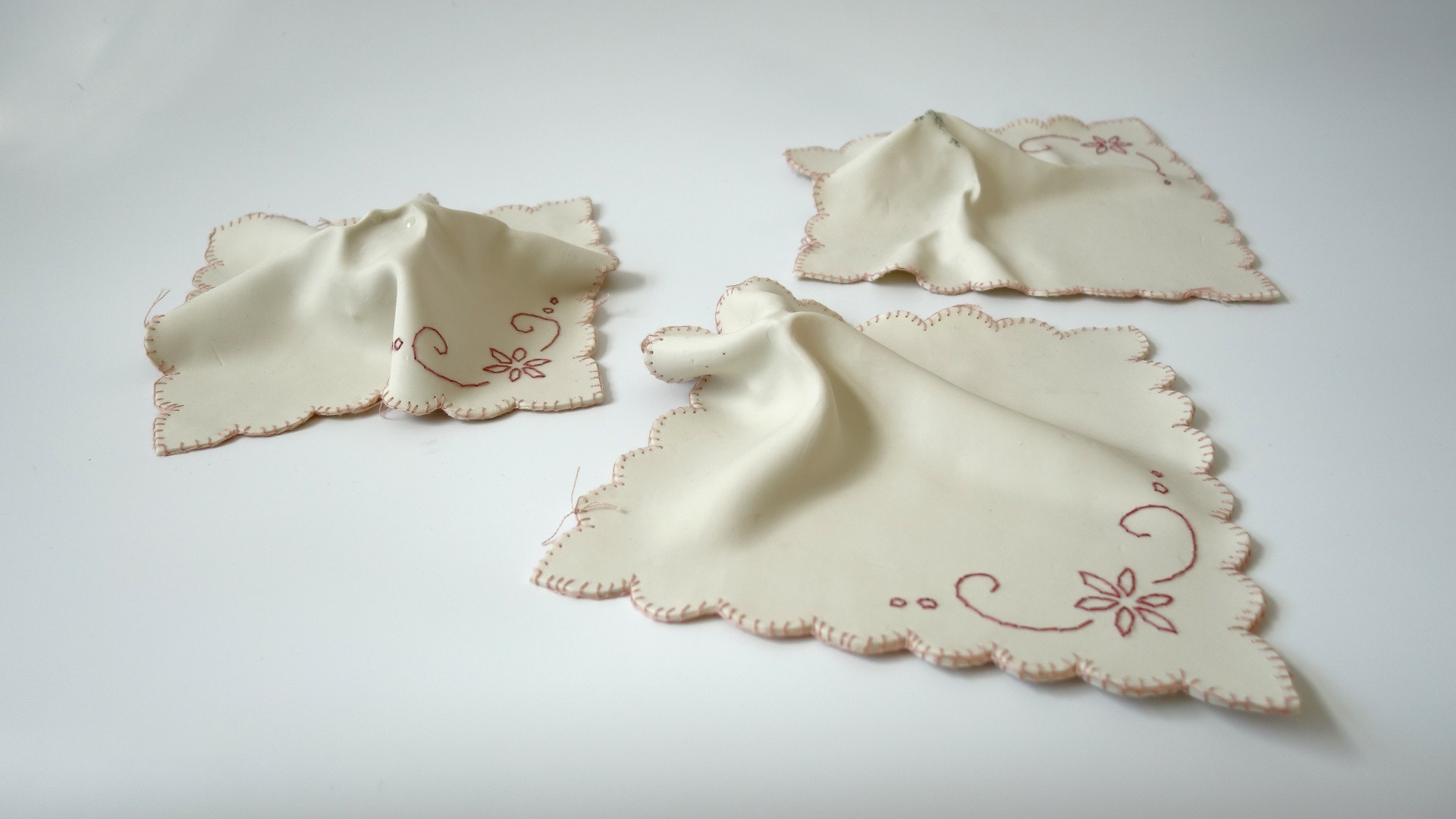
It’s important to note that my pieces reference vases and other functional pieces of porcelain since these ceramic vessels seem to be the most common ones in the home. However, I’ve decided to stop working with the vase shape, because a lot of people I meet get distracted by the shape and see it as a functional piece rather than a piece of art which has a conceptual idea behind it.
I get asked the question ‘but how do you use it?’ more often than any other question. But because they’re artworks, my vases are as non-functional as the cloth elements on them. Putting water in them would actually destroy them and also discolour the thread.
I’ve worked with other shapes, such as cloths, spoons and casserole dishes in the past to avoid questions about their functionality. It takes attention away from what the pieces are actually about, but then I lose the ceramic reference. This is one of the biggest struggles I have in my practice right now.
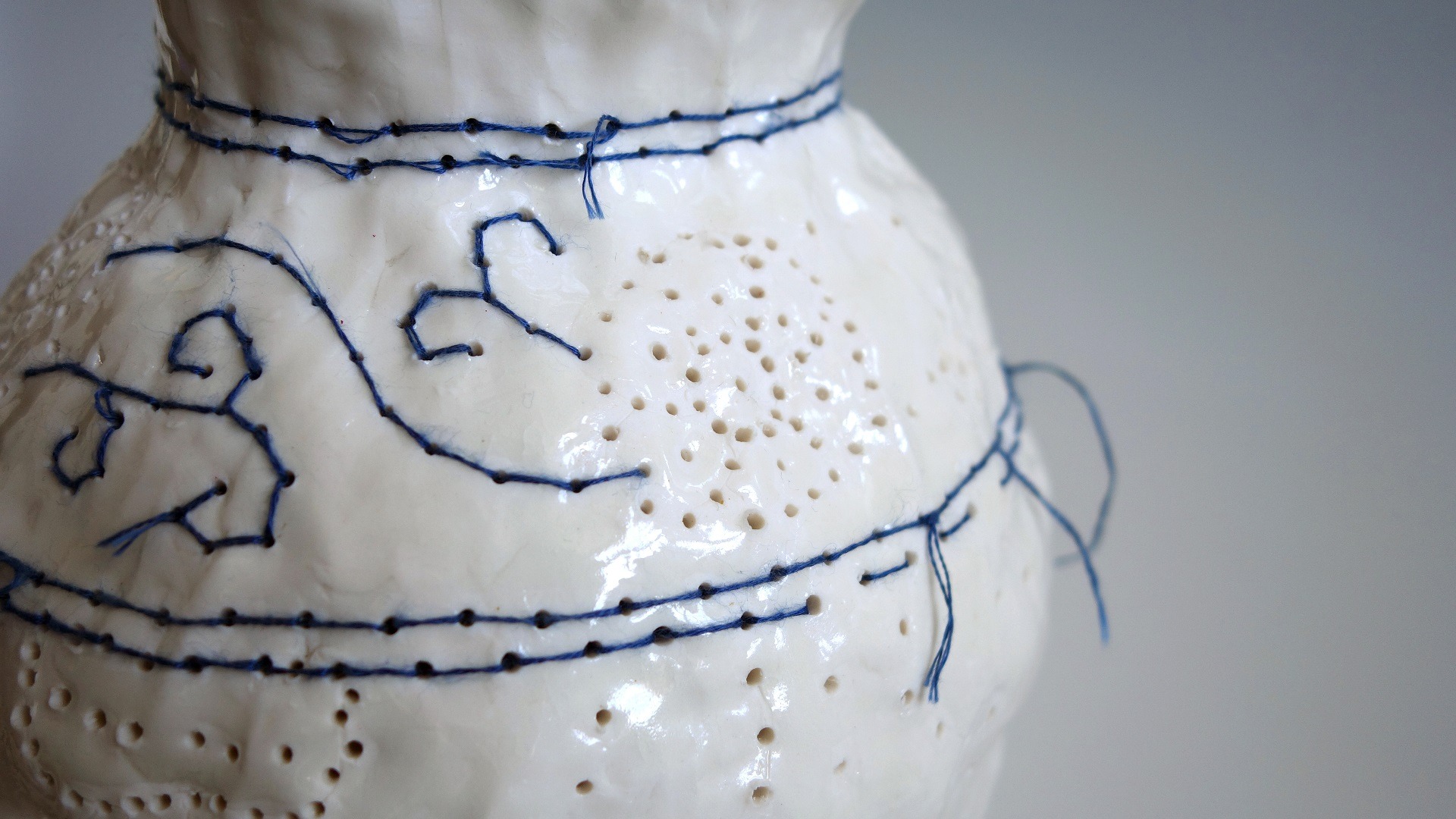
Time for change
‘I don’t have any plans to stop doing my embroidered pieces, but I’ve felt in need of change lately – for a long time I had a problem doing anything that wasn’t the shape of a vase!’
Now I’m trying to leave that behind and plan to go back to exploring figurative and sculptural shapes. I’m in a more experimental phase where I’m focusing on new techniques and clays, without it necessarily needing to become something.
In 2022 I attended a decoration master class at the International Ceramic Studios in Kecskemét, Hungary with the ceramicist Wendy Kershaw. It gave me loads of inspiration and new directions to explore. I’m currently looking at sgrafitto and wall pieces.
I think every day is a challenge right now, as I’m sure it is for most people in the creative field. It’s hard to survive as an artist and I have several part-time jobs where I teach ceramics. I love introducing people to ceramics in my role as an educator, but it takes the focus from my work and time in the studio. My biggest dream is to have a stable financial situation and be able to put all my energy, time and focus into developing my own work.
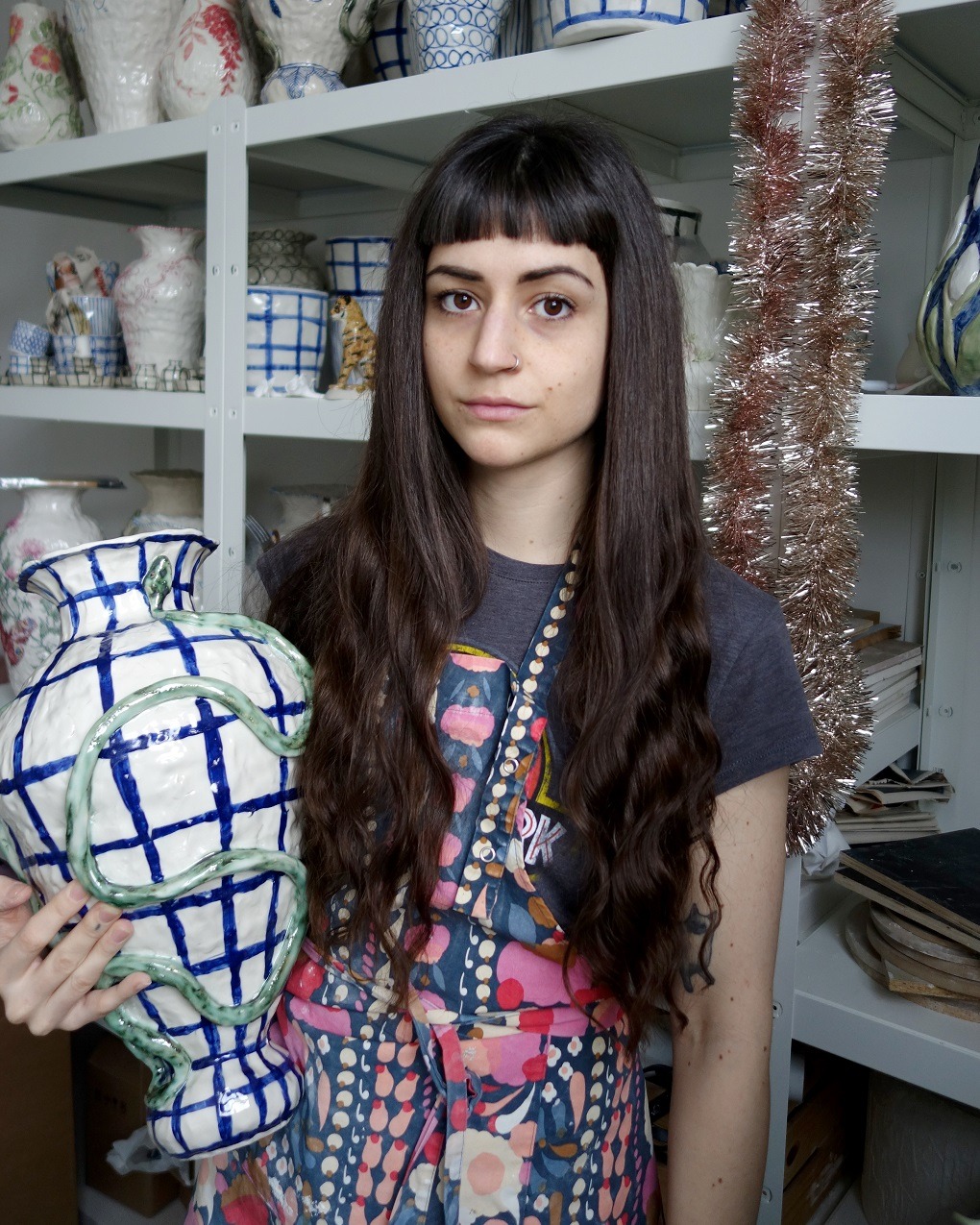
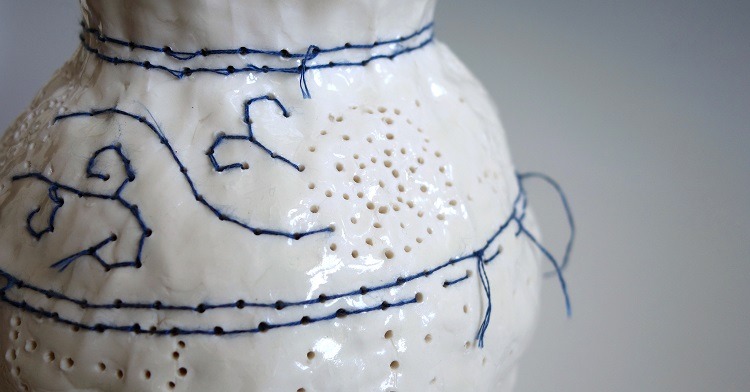

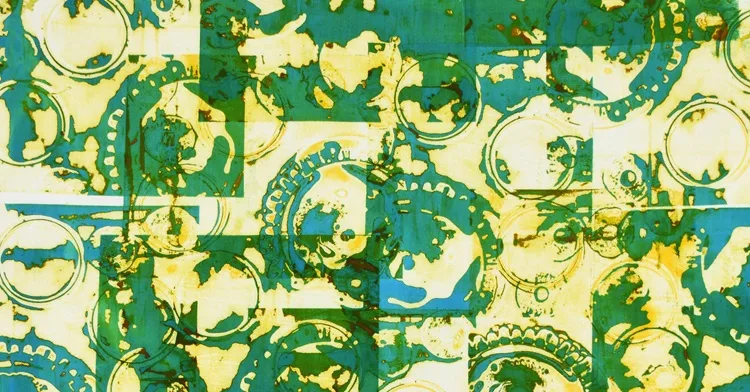
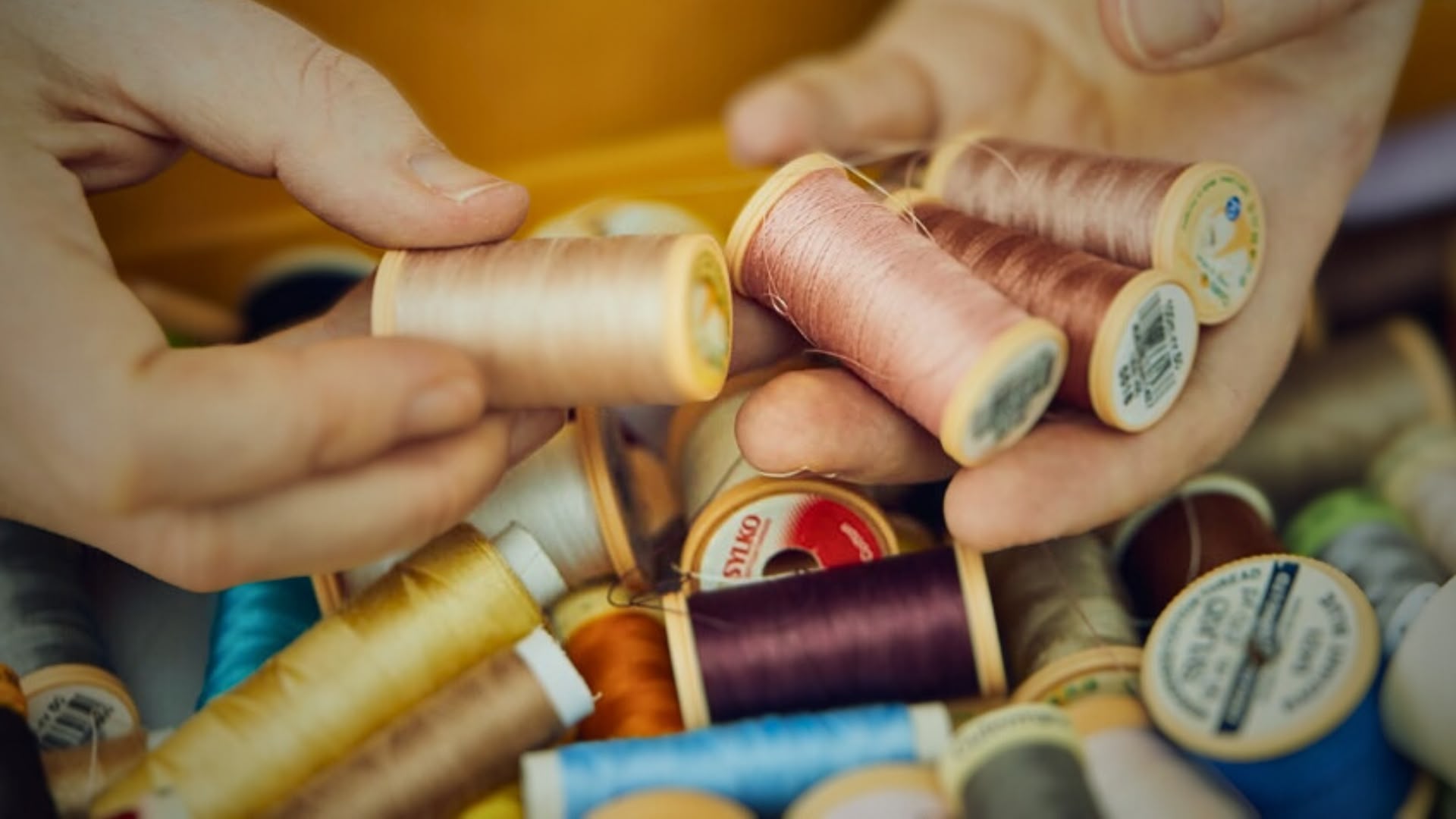
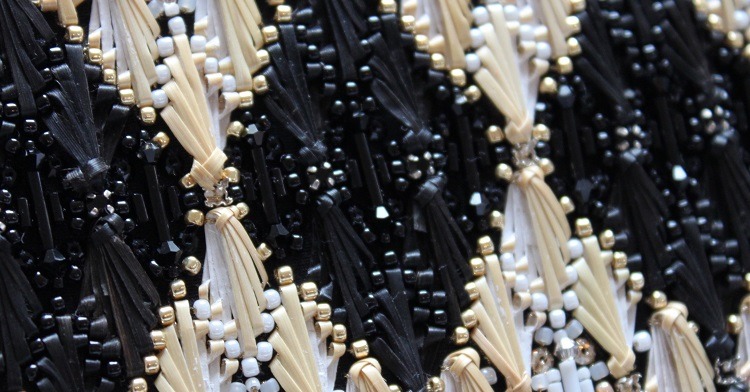
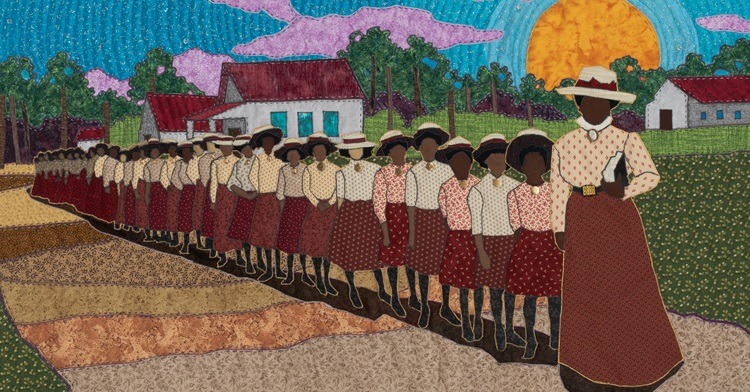
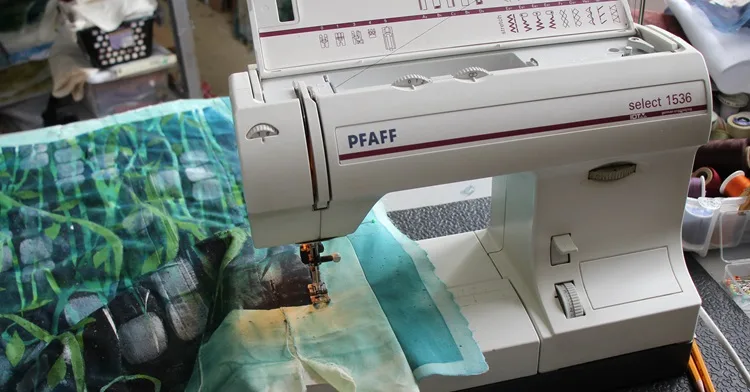
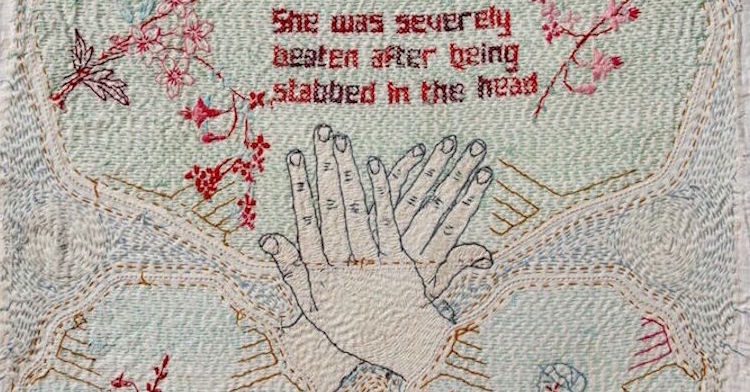
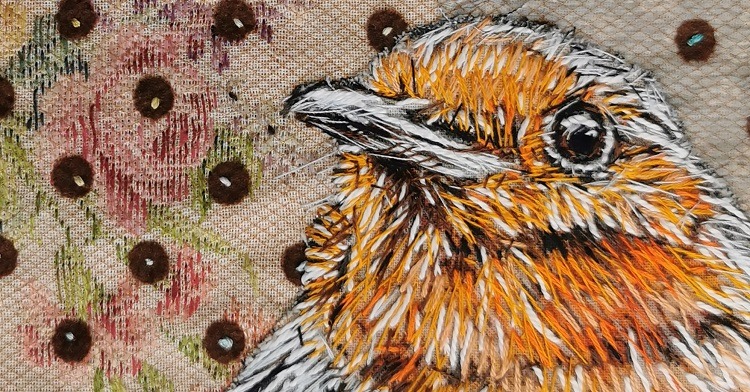
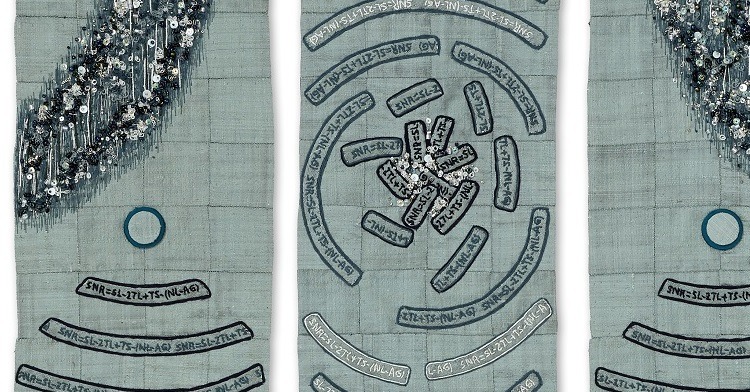
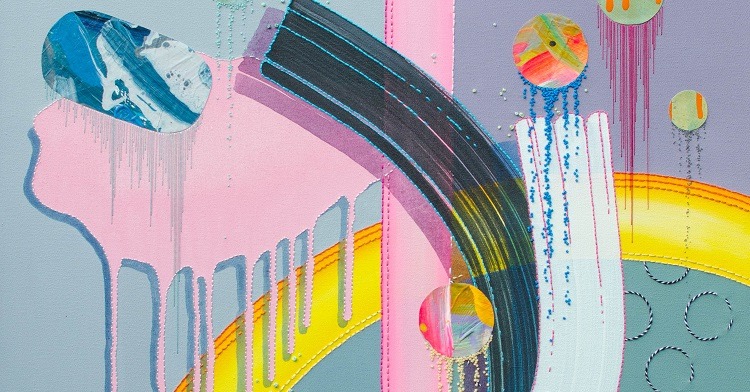
5 comments
Evelyn Myler
Don’t give up on the idea of the method, just open your creative juices to flow onto non-conventional shapes or forms. I like the smaller sized products that resembled a delicate handkerchief. Fabrics, clothing, animals, lampshades, etc.would prove to be interesting as well.
Marilyn Clulow
nice to see her growth as a person and an artist, going from a disdain and devaluation of the crafts that women did to an appreciation of the value of women’s work
Merlin
Très surprenant et beau.
Sharron
Unbelievably beautiful and insanely creative
Susan cole
Fantastic idea and beautiful to honour the ancestors in this way